
Bocas del Toro: Panama's Caribbean Paradise
Discover Bocas del Toro, Panama's Caribbean gem, where lush rainforests, pristine beaches, and vibrant culture come together for an unforgettable experience.
Bocas del Toro is a charming archipelago located on the Caribbean coast of Panama. Known for its lush rainforests, turquoise waters, and vibrant marine life, this destination offers a unique blend of natural beauty and cultural richness. Whether you are an adventure seeker, a nature lover, or someone looking to relax on pristine beaches, Bocas del Toro has something for everyone. The main town, Bocas Town, is situated on Isla Colón and is the hub of activity in the archipelago. Here, visitors can find an array of colorful buildings, lively bars, and delicious restaurants serving fresh seafood. The laid-back atmosphere makes it easy to unwind and enjoy the Caribbean vibe. Don't miss the chance to explore the local markets and shops where you can find unique crafts and souvenirs. For those interested in outdoor activities, Bocas del Toro offers a plethora of options. Snorkeling and diving enthusiasts will be thrilled by the coral reefs teeming with tropical fish, while surfers can catch some impressive waves at beaches like Playa Bluff. Kayaking through mangrove forests, hiking in Bastimentos National Marine Park, and visiting the enchanting Isla Zapatilla are just a few of the many adventures that await you. Bocas del Toro is also home to a rich cultural tapestry, with influences from Afro-Caribbean, Indigenous, and Latin cultures. This is reflected in the local festivals, music, and cuisine, making your visit a culturally enriching experience. Be sure to engage with the friendly locals who are always eager to share stories about their beloved archipelago.
Local tips in Bocas del Toro
- Visit during the dry season (December to April) for the best weather.
- Use water taxis to get around the islands; they are affordable and convenient.
- Bring insect repellent; the tropical climate attracts mosquitoes.
- Try the local dish, Rondon, a delicious coconut milk stew with fish or meat.
- Book tours in advance, especially during peak season, to ensure availability.
- Respect the local wildlife and marine life by not touching or disturbing them.
- Carry cash; not all establishments accept credit cards.
Bocas del Toro: Panama's Caribbean Paradise
Bocas del Toro is a charming archipelago located on the Caribbean coast of Panama. Known for its lush rainforests, turquoise waters, and vibrant marine life, this destination offers a unique blend of natural beauty and cultural richness. Whether you are an adventure seeker, a nature lover, or someone looking to relax on pristine beaches, Bocas del Toro has something for everyone. The main town, Bocas Town, is situated on Isla Colón and is the hub of activity in the archipelago. Here, visitors can find an array of colorful buildings, lively bars, and delicious restaurants serving fresh seafood. The laid-back atmosphere makes it easy to unwind and enjoy the Caribbean vibe. Don't miss the chance to explore the local markets and shops where you can find unique crafts and souvenirs. For those interested in outdoor activities, Bocas del Toro offers a plethora of options. Snorkeling and diving enthusiasts will be thrilled by the coral reefs teeming with tropical fish, while surfers can catch some impressive waves at beaches like Playa Bluff. Kayaking through mangrove forests, hiking in Bastimentos National Marine Park, and visiting the enchanting Isla Zapatilla are just a few of the many adventures that await you. Bocas del Toro is also home to a rich cultural tapestry, with influences from Afro-Caribbean, Indigenous, and Latin cultures. This is reflected in the local festivals, music, and cuisine, making your visit a culturally enriching experience. Be sure to engage with the friendly locals who are always eager to share stories about their beloved archipelago.
When is the best time to go to Bocas del Toro?
Iconic landmarks you can’t miss
Fort San Lorenzo
Explore the historical significance and stunning views of Fort San Lorenzo, a UNESCO World Heritage site in Colón, Panama.

Bibi's
Discover the flavors of the Caribbean at Bibi's, a charming restaurant in Bocas del Toro, known for its fresh, local ingredients and vibrant atmosphere.

Baru Volcano National Park
Explore the breathtaking beauty of Baru Volcano National Park, where adventure meets nature in Panama's stunning landscapes.

Selina Red Frog
Experience the beauty of Isla Bastimentos with modern comforts at Selina Red Frog, your perfect tropical getaway in Panama.

Bambuda Lodge
Experience the perfect blend of adventure and relaxation at Bambuda Lodge on Isla Solarte in Bocas del Toro, Panama's tropical paradise.

Palmar Beach Lodge
Discover the serene beauty of Palmar Beach Lodge in Isla Bastimentos, where luxury meets nature on the stunning Red Frog Beach.

Red Frog Beach Island Resort
Experience the ultimate tropical getaway at Red Frog Beach Island Resort, where luxury meets nature in the stunning Bocas del Toro archipelago.

The Blue Coconut Restaurant
Experience the flavors of the Caribbean at The Blue Coconut, a top-rated restaurant on Bastimentos Island specializing in fresh seafood and fish & chips.

Up in the Hill
Experience the beauty of organic farming at Up in the Hill, where nature, creativity, and sustainability unite in a breathtaking landscape.

Sol Bungalows Bocas del Toro
Discover the serene beauty of Sol Bungalows in Isla Solarte, Bocas del Toro, where comfort meets adventure in a tropical paradise.

Hotel Eclypse de Mar Acqua Lodge
Discover tranquility and adventure at Hotel Eclypse de Mar Acqua Lodge on Bastimentos Island, a perfect blend of comfort and natural beauty in Bocas del Toro.

Isla Bastimentos
Discover the natural beauty and cultural richness of Isla Bastimentos, a tropical paradise in Panama's Bocas del Toro Province.

La Selva at Nomad Tree Lodge
Discover the enchanting beauty of La Selva at Nomad Tree Lodge in Bocas del Toro, where adventure meets eco-friendly luxury in a tropical paradise.

Plasticbottle Village
Explore Plasticbottle Village in Bocas del Toro, a creative museum showcasing sustainable art made from recycled plastic bottles.
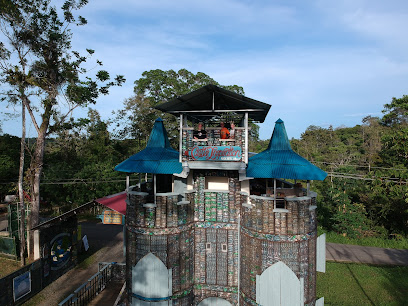
Green Acres Chocolate Farm
Discover the enchanting world of chocolate at Green Acres Chocolate Farm in Bocas del Toro, where every bite tells a story of sustainability and delight.

Unmissable attractions to see
Starfish Beach
Experience the serene beauty of Starfish Beach in Bocas del Toro, a perfect coastal getaway for relaxation and marine exploration.

Starfish Beach
Experience the breathtaking beauty of Starfish Beach, a tropical paradise in Bocas del Toro, where sun, sand, and vibrant marine life await you.

Filthy Friday Bocas
Experience the vibrant culture of Bocas del Toro at Filthy Friday Bocas, your go-to destination for clothing, local events, and travel information.

Parque Simon Bolivar
Discover tranquility and vibrant culture at Parque Simon Bolivar, the lush green heart of Bocas del Toro, perfect for relaxation and exploration.

Zapatilla Island
Explore the pristine beaches and vibrant wildlife of Bastimentos Island, a hidden paradise in Panama's Caribbean archipelago.
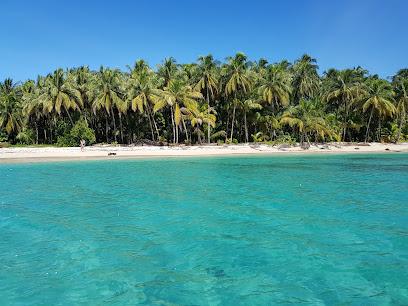
Playa Bluff
Experience the breathtaking beauty of Playa Bluff, a pristine beach in Panama perfect for relaxation, adventure, and nature exploration.

Plasticbottle Village
Explore Plasticbottle Village, a vibrant eco-art museum in Bocas del Toro showcasing incredible sculptures made from recycled plastic.

Parque Nacional Isla Bastimentos
Explore the breathtaking landscapes and rich biodiversity of Parque Nacional Isla Bastimentos, a tropical paradise in Panama's Bocas del Toro Province.

Bird Island
Explore the enchanting Bocas del Toro, Panama's tropical paradise with stunning beaches, rich culture, and vibrant marine life. A perfect getaway awaits.

La Piscina Beach
Discover La Piscina Beach, a stunning natural bay in Bocas del Toro, known for its clear waters, soft sands, and vibrant marine life - a perfect tropical getaway.

Dolphin Bay Hideaway
Discover the beauty of Bocas del Toro at Dolphin Bay Hideaway, a tranquil bed and breakfast offering dolphin watching, snorkeling, and nature hikes.
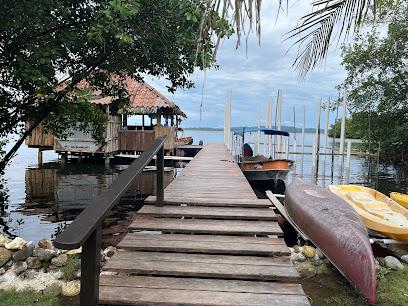
Playa Gandoca
Discover the untouched beauty of Playa Gandoca in Limón Province, a tropical paradise perfect for relaxation and eco-adventures.

Bastimentos Sky Zipline Canopy Tour
Experience the thrill of the Bastimentos Sky Zipline Canopy Tour, where adventure meets breathtaking views in the heart of Bocas del Toro.
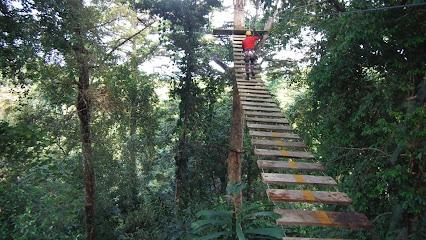
Cueva de Murcielagos Cave of the Bats
Explore the mystical Cueva de Murcielagos in Bocas del Toro, a captivating cave filled with unique wildlife and stunning natural formations.
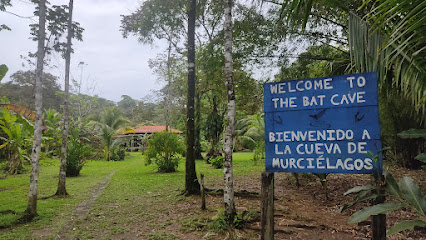
Jager Knights Catamaran Tours
Discover the stunning beauty of Bocas Del Toro with Jager Knights Catamaran Tours, offering unforgettable boat adventures in paradise.

Essential places to dine
Bibi's
Experience the vibrant flavors of Bocas del Toro at Bibi's – where fresh seafood meets island charm in a delightful dining atmosphere.

SKULLY'S (Hotel/Hostal, Bar & Food Court)
Discover Skully's in Bocas del Toro – where delicious food meets vibrant nightlife and cozy accommodations in a tropical paradise.

Café Del Mar
Experience the flavors of paradise at Café Del Mar in Bocas del Toro - where delicious cuisine meets stunning Caribbean views.

La Buga Gastro Market
Discover the flavors of Panama at La Buga Gastro Market - where local ingredients meet international culinary delights in a vibrant setting.

Yarisnori
Experience authentic Panamanian cuisine at Yarisnori in Bocas del Toro - where fresh flavors meet breathtaking views.

Buena Vista Restaurant
Discover authentic Caribbean cuisine at Buena Vista Restaurant in Bocas del Toro – where flavor meets breathtaking ocean views.

Coco Fastronomy
Experience the vibrant flavors of Panama at Coco Fastronomy, a culinary delight in Bocas del Toro that celebrates local ingredients and creativity.

Restaurant Tom
Experience authentic Panamanian cuisine at Restaurant Tom in Bocas del Toro - where flavor meets tradition in every dish.
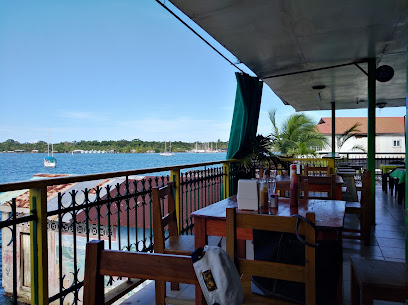
El Ultimo Refugio
Discover El Ultimo Refugio: A must-visit restaurant in Bocas del Toro offering exquisite local cuisine and vibrant ambiance for an unforgettable dining experience.

Octo
Discover culinary excellence at Octo Restaurant in Bocas del Toro, where local flavors meet innovative cuisine in a stunning tropical setting.

Restaurante El Pirata
Discover exquisite Caribbean cuisine at Restaurante El Pirata in Bocas del Toro – where flavors meet breathtaking views!

Falafel Bocas
Experience authentic Israeli flavors at Falafel Bocas in Bocas del Toro - where delicious meets delightful in every bite.

Amaranto
Discover Amaranto in Bocas del Toro - A delightful vegetarian café offering fresh breakfasts and brunches with a local twist.

Tequila Republic
Experience authentic Mexican flavors at Tequila Republic in Bocas del Toro – where great food meets vibrant culture.

Renny's Pizza
Experience the best pizza in Bocas del Toro at Renny's Pizza – where fresh ingredients meet authentic flavors!

Markets, malls and hidden boutiques
Bocas Tattoo INK
Discover the artistic spirit of Bocas del Toro at Bocas Tattoo INK, where unique tattoos and local art come together in a vibrant atmosphere.

Jungle Blends
Explore Bocas del Toro's hidden gem, Jungle Blends, where unique local products and vibrant flavors await every tourist.

Black Cat Gifts and Art
Explore Bocas del Toro's vibrant culture at Black Cat Gifts and Art, your destination for unique clothing and artisan crafts.

3R Mall
Discover the vibrant offerings of 3R Mall in Bocas del Toro, where fresh produce and local delicacies await every visitor.

Shambala
Explore Shambala in Bocas, Panama – a unique gift shop filled with beautiful crystals, handcrafted treasures, and local artistry waiting for your discovery.

Bocas del Toro Surf Shop
Discover the ultimate surf experience at Bocas del Toro Surf Shop, where every wave awaits your ride in paradise.

Duo2 market
Experience the vibrant flavors of Bocas del Toro at Duo2 Market, your go-to grocery store for local and organic products.

Essentialbocas
Immerse yourself in the essence of Bocas del Toro at Essentialbocas, your destination for organic and locally sourced natural goods.
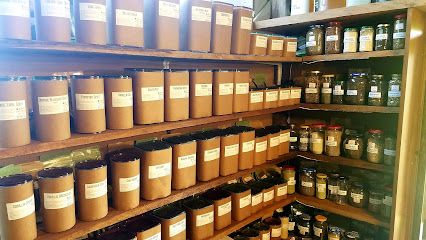
M/S Zunfa
Discover the vibrant M/S Zunfa supermarket in Bocas del Toro for all your shopping needs, from local delicacies to unique souvenirs.

Gloria’s Handmade Art and Hammocks
Explore the vibrant artistry of Panama at Gloria's Handmade Art and Hammocks, where unique souvenirs await to tell your travel story.

Indi Surfhouse Boutique
Explore the vibrant fashion of Bocas del Toro at Indi Surfhouse Boutique, where surf culture meets local craftsmanship in a unique shopping experience.

CELL & GIFT
Discover the best in mobile technology at CELL & GIFT in Bocas del Toro, where local charm meets modern convenience.

Boquete_Orion
Discover the vibrant flavors of Panama at Boquete Orion, your go-to greengrocer in Bocas del Toro, offering fresh local produce and artisanal goods.

Casa Bonza
Discover unique handcrafted treasures at Casa Bonza, the premier gift shop in Bocas del Toro, showcasing local artisans and sustainable crafts.

Karma Boutique
Explore unique fashion at Karma Boutique, Bocas del Toro's vibrant clothing store offering island-inspired styles and accessories for every occasion.

Essential bars & hidden hideouts
SKULLY'S (Hotel/Hostal, Bar & Food Court)
Discover the lively spirit of SKULLY'S in Bocas del Toro, where dining, drinks, and relaxation come together in a vibrant tropical setting.

Toro Loco Sports Bar
Experience the ultimate sports bar atmosphere at Toro Loco in Bocas del Toro, where great food and thrilling games meet.

Tequila Republic
Experience the vibrant atmosphere and delicious flavors at Tequila Republic in Bocas del Toro, where great food and drinks meet friendly service.

Iguana
Discover the vibrant nightlife of Bocas del Toro at Iguana, where cocktails flow and the music keeps you dancing until dawn.

Bom Bom Beach Bar at Island Plantation
Experience tropical flavors and stunning views at Bom Bom Beach Bar, Bocas del Toro's premier tapas destination.

Space lounge and restaurant
Discover a vibrant nightlife and delightful dining experience at Space Lounge and Restaurant in Bocas del Toro, where fun meets flavor in a cosmic setting.

Floating Bar
Discover the Floating Bar in Bocas del Toro - a floating oasis with refreshing drinks, breathtaking views, and thrilling dive experiences.

Boya de Vida
Discover Boya de Vida, a tropical bar in Bocas del Toro with stunning views, refreshing drinks, and a vibrant atmosphere perfect for relaxation.

Lost Boys Blues Bar
Discover the vibrant Lost Boys Blues Bar in Bocas del Toro, where live music and local flavors create an unforgettable nightlife experience.

La Coralina Beach Club
Experience the ultimate beach paradise at La Coralina Beach Club, where stunning views and delicious cuisine meet relaxation in Bocas del Toro.

La Previa Night Club
Experience the vibrant nightlife at La Previa Night Club in Bocas del Toro, where music, dance, and tropical cocktails come together for an unforgettable evening.

Vicmar Club
Discover the lively atmosphere and refreshing drinks at Vicmar Club, the perfect bar experience in Bocas del Toro.

Loco Dave's Bar and books!
Experience the unique blend of cocktails and literature at Loco Dave's Bar and Books in Bocas del Toro, a must-visit for tourists and locals.

Bocas Licks
Experience the vibrant nightlife and delicious cocktails at Bocas Licks, the heart of Bocas del Toro's bar scene.

La Sala BDT
Experience the vibrant nightlife of Bocas del Toro at La Sala BDT, where delicious drinks and lively ambiance await.

Local Phrases
-
- HelloHola
[oh-lah] - GoodbyeAdiós
[ah-dee-ohs] - YesSí
[see] - NoNo
[noh] - Please/You're welcomePor favor/De nada
[por fah-vor/deh nah-dah] - Thank youGracias
[grah-see-ahs] - Excuse me/SorryDisculpe/Perdón
[dees-kool-peh/pehr-dohn] - How are you?¿Cómo estás?
[koh-moh ehs-tahs] - Fine. And you?Bien. ¿Y tú?
[byehn. ee too] - Do you speak English?¿Hablas inglés?
[ah-blahs een-glehs] - I don't understandNo entiendo
[noh ehn-tee-ehn-doh]
- HelloHola
-
- I'd like to see the menu, pleaseMe gustaría ver el menú, por favor
[meh goo-stah-ree-ah vehr ehl meh-noo, por fah-vor] - I don't eat meatNo como carne
[noh koh-moh kahr-neh] - Cheers!¡Salud!
[sah-loohd] - I would like to pay, pleaseMe gustaría pagar, por favor
[meh goo-stah-ree-ah pah-gahr, por fah-vor]
- I'd like to see the menu, pleaseMe gustaría ver el menú, por favor
-
- Help!¡Ayuda!
[ah-yoo-dah] - Go away!¡Vete!
[veh-teh] - Call the Police!¡Llama a la Policía!
[yah-mah ah lah poh-lee-see-ah] - Call a doctor!¡Llama a un médico!
[yah-mah ah oon meh-dee-koh] - I'm lostEstoy perdido
[ehs-toy pehr-dee-doh] - I'm illEstoy enfermo
[ehs-toy ehn-fehr-moh]
- Help!¡Ayuda!
-
- I'd like to buy...Me gustaría comprar...
[meh goo-stah-ree-ah kohm-prahr...] - I'm just lookingSolo estoy mirando
[soh-loh ehs-toy mee-rahn-doh] - How much is it?¿Cuánto cuesta?
[kwan-toh kwehs-tah] - That's too expensiveEso es demasiado caro
[eh-soh ehs deh-mah-see-ah-doh kah-roh] - Can you lower the price?¿Puedes bajar el precio?
[pweh-dehs bah-hahr ehl pree-syoh]
- I'd like to buy...Me gustaría comprar...
-
- What time is it?¿Qué hora es?
[keh oh-rah ehs] - It's one o'clockEs la una
[ehs lah oo-nah] - Half past (10)Las diez y media
[lahs dyehs ee meh-dee-ah] - MorningMañana
[mah-nyah-nah] - AfternoonTarde
[tahr-deh] - EveningNoche
[noh-cheh] - YesterdayAyer
[ah-yehr] - TodayHoy
[oy] - TomorrowMañana
[mah-nyah-nah] - 1Uno
[oo-noh] - 2Dos
[dohs] - 3Tres
[trehs] - 4Cuatro
[kwah-troh] - 5Cinco
[seen-koh] - 6Seis
[says] - 7Siete
[syeh-teh] - 8Ocho
[oh-choh] - 9Nueve
[nweh-veh] - 10Diez
[dyehs]
- What time is it?¿Qué hora es?
-
- Where's a/the...?¿Dónde está...?
[dohn-deh ehs-tah] - What's the address?¿Cuál es la dirección?
[kwal ehs lah dee-rehk-syohn] - Can you show me (on the map)?¿Puedes mostrarme (en el mapa)?
[pweh-dehs mohs-trar-meh (ehn ehl mah-pah)] - When's the next (bus)?¿Cuándo es el próximo (autobús)?
[kwan-doh ehs ehl proh-ksy-moh (ow-toh-boos)] - A ticket (to ....)Un boleto (a ....)
[oon boh-leh-toh (ah ....)]
- Where's a/the...?¿Dónde está...?
History of Bocas del Toro
-
Before European contact, the Bocas del Toro region was inhabited by various indigenous groups, including the Ngäbe-Buglé and the Teribe. These communities lived off the land and sea, developing a rich cultural heritage that included intricate weaving, pottery, and a deep understanding of the local ecosystem.
-
In 1502, during his fourth and final voyage, Christopher Columbus arrived in the Bocas del Toro archipelago. He was captivated by the area's natural beauty and abundant resources, naming several of the islands. His visit marked the beginning of European exploration and eventual colonization of the region.
-
During the 17th and 18th centuries, Bocas del Toro was a haven for pirates and privateers who took advantage of its secluded bays and strategic location. Notorious figures such as Captain Morgan are believed to have used the archipelago as a base for launching attacks on Spanish galleons transporting gold and silver from the New World to Europe.
-
In the late 19th and early 20th centuries, the banana industry transformed Bocas del Toro. American companies, most notably the United Fruit Company, established extensive plantations and infrastructure, including railways and ports. This period saw significant economic growth but also brought challenges, such as labor disputes and environmental changes.
-
Bocas del Toro's diverse population today reflects its complex history. Afro-Caribbean, indigenous, Latino, and expatriate communities coexist, each contributing to the region's vibrant culture. Festivals, music, and cuisine in Bocas del Toro offer a unique blend of traditions and influences from around the world.
-
In recent decades, Bocas del Toro has become a popular tourist destination, known for its pristine beaches, vibrant coral reefs, and lush rainforests. Tourism has brought economic opportunities but also raised concerns about environmental sustainability and cultural preservation. Efforts are ongoing to balance development with conservation.
Bocas del Toro Essentials
-
Bocas del Toro is accessible primarily via air and sea. The nearest international airport is Tocumen International Airport in Panama City. From there, you can take a domestic flight to Bocas del Toro's Isla Colón airport, which takes about an hour. Alternatively, you can travel by bus or car to Almirante, a town on the mainland, and then take a water taxi to Bocas Town on Isla Colón. The bus journey from Panama City to Almirante takes approximately 10 hours, and the water taxi ride takes about 30 minutes.
-
Within Bocas del Toro, transportation options include water taxis, bicycles, and golf carts. Water taxis are the most common way to travel between the islands, and they operate frequently throughout the day. Bicycles and golf carts can be rented in Bocas Town and are ideal for exploring Isla Colón. Taxis and buses are also available within Bocas Town for short trips.
-
The official currency in Panama is the Panamanian Balboa (PAB), but the US Dollar (USD) is widely accepted and used interchangeably. Credit cards are accepted in most hotels, restaurants, and shops in Bocas Town, but it is advisable to carry cash, especially when visiting smaller islands or remote areas. ATMs are available in Bocas Town, but they can sometimes run out of cash, so plan accordingly.
-
Bocas del Toro is generally a safe destination, but like any tourist spot, it is important to remain vigilant. Petty theft can occur, so keep an eye on your belongings and avoid displaying valuables. Some areas, such as the Red Frog Beach area, have reported occasional incidents of theft. It is advisable to use a hotel safe for your valuables and to avoid walking alone at night in poorly lit areas.
-
In case of emergency, dial 911 for immediate assistance. Bocas del Toro has a small hospital in Bocas Town on Isla Colón, which can handle minor medical issues. For more serious medical emergencies, evacuation to a hospital in Panama City may be necessary. Pharmacies are available in Bocas Town where you can purchase over-the-counter medications. It is recommended to have travel insurance that covers medical emergencies.
-
Fashion: Do wear lightweight and breathable clothing suitable for a tropical climate. Don't wear overly revealing clothing when visiting local communities. Religion: Do respect local customs and traditions. There are several indigenous communities in the area; always ask for permission before taking photos. Public Transport: Do use water taxis for inter-island travel and be mindful of safety regulations. Don't overload the boats. Greetings: Do greet people with a friendly 'Hola' or 'Buenas.' A handshake is also common. Eating & Drinking: Do try local seafood and traditional dishes. Don't refuse food or drink offerings, as it is considered impolite.
-
To experience Bocas del Toro like a local, visit the public market in Bocas Town where you can buy fresh produce and seafood. Engage with the local Ngäbe-Buglé people and learn about their culture. Explore the lesser-known beaches and islands, such as Isla Carenero and Isla Bastimentos, for a more authentic experience. Participate in local festivals and events, such as the Feria del Mar, to immerse yourself in the local culture.
Trending Landmark in Bocas del Toro
-
Fort San Lorenzo
-
Bibi's
-
Baru Volcano National Park
-
Selina Red Frog
-
Bambuda Lodge
-
Palmar Beach Lodge
-
Red Frog Beach Island Resort
-
The Blue Coconut Restaurant
-
Up in the Hill
-
Sol Bungalows Bocas del Toro
-
Hotel Eclypse de Mar Acqua Lodge
-
Isla Bastimentos
-
La Selva at Nomad Tree Lodge
-
Plasticbottle Village
-
Green Acres Chocolate Farm
Nearby Cities to Bocas del Toro
-
Things To Do in Puerto Viejo
-
Things To Do in Boquete
-
Things To Do in Volcan
-
Things To Do in David
-
Things To Do in Manuel Antonio
-
Things To Do in San Jose
-
Things To Do in Chitre
-
Things To Do in Colon
-
Things To Do in Jaco
-
Things To Do in Las Tablas
-
Things To Do in Portobelo
-
Things To Do in La Fortuna
-
Things To Do in Panama City
-
Things To Do in Monteverde
-
Things To Do in San Blas Islands










